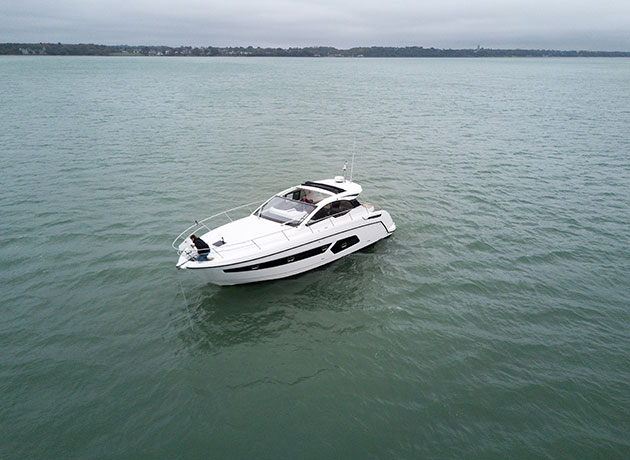Our step-by-step demonstration of what you need to do if you lose an engine and need to turn the boat around
There are two main reasons for buying a twin-engined boat, the first is redundancy (if one breaks, the second can get you home) the other is manoeuvrability (two engines give better control at low speed).
That’s all well and good until one engine does break down. You may still be able to get home but berthing it has just got a whole lot trickier, so it pays to know how your boat handles on one engine.
As with any emergency it’s best to have a go at this in advance, preferably on a calm day with plenty of space to play in. The best way to do this is by learning how to turn your boat on one engine. If you can master this you are half way to getting it into a berth.
Obviously, there are lots of single-engined boats which turn just fine with one engine, but it’s mounted on the centre line with a single large rudder that steers equally well in both directions.
Twin-engined boats have offset engines and two smaller rudders, so if one engine breaks it’s always easier to turn in one direction rather than the other. If there is enough space to turn around using ahead only then turn in the direction it wants to go, with the engine on the outside.
That is also the case with steerable drives such as twin outboards or sterndrives, even in restricted spaces. However, with a shaftdrive boat and only limited room to manoeuvre, it’s easier if you steer the boat against the working engine.
This is because there are three factors that affect the steering of a twin-shaft boat: prop offset (the further the propeller is from the centreline, the greater the steering effect), prop walk (the sideways travel all propellers produce, particularly in astern) and the rudders (more effective in ahead than astern due to increased water flow from the propeller thrust). Knowing these dynamics will help you use them to best effect.
If your port engine is dead, leaving just your starboard engine running, and you turn the boat to port (the way it wants to) you will have all three factors working for you – prop offset, prop walk and rudders. The moment you run out of space and go astern, they all start to work against you – the offset is on the wrong side, prop walk is pushing you the wrong way and the rudder is all but useless, so you’ll end up back where you started.
The better option is to turn to starboard, against the working engine and use the rudder to overwhelm the other two. Going ahead, the offset is against you and so is the prop walk but you can overcome them with the help of extra revs to increase water flow over the rudders.
Once you have turned through the first 50º or 60º, take the boat out of gear. Now there is no offset or prop walk to fight against but the flow of water over the rudders means the boat keeps turning. When you run out of room and engage astern, the prop offset and prop walk are now working for you.
You don’t even need to adjust the rudders as you won’t be going astern quickly enough for them to have an impact. These two factors alone will drag the stern through the remainder of the turn, completing the 180º spin in a controlled manner.
























